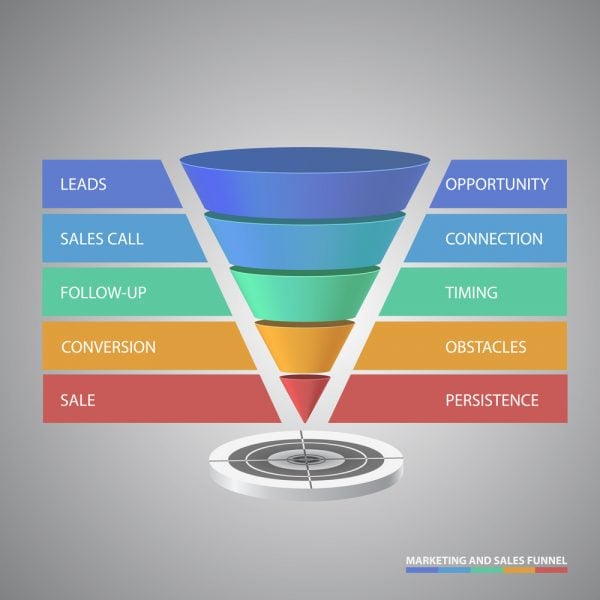
A sales funnel is a model that describes the client’s path from first acquaintance with a product to an actual purchase.
For example, imagine we sell artificial Christmas trees in an online store. First, we need people to get to know about the product. To do this, we launch ads. Our ad is seen by 10,000 people. 5,000 of them call or write to us. 2,000 go on to place an order and 200 people make subsequent purchases and become regular customers. At each step, the numbers fall like a funnel narrowing.
With the help of a funnel, we guide customers through the actions we need and then analyse each stage. The strength of sales funnels is that they transform your business from chaos to order by providing structure. Monitoring data at every stage can improve conversion.
How to build a sales funnel?
Create a proposition. You must catch the attention of potential clients. At this stage, you can’t use general phrases and abstract formulas like “we have the best bicycles in the city.”
You must create a USP showing why you really are better than your competitors. For example, you can offer free courier delivery or mention that you are the only one shipping bikes from Japan.
Choose tools to advertise your goods or services. There’s no need to spray everything at once. This will waste both time and budget. Analyse where your target audience will definitely notice you. Pick a few tools and stick to them.
For example, SMS marketing is good for informing your existing customer base of new products.
“New bikes straight from the heart of Japan. Find out more on our website [link]”
If SMS marketing is for you, then you can take full advantage of the Intis Telecom platform, which provides a whole set of tools for sending and analysing bulk messages.
Create compelling content. Why is this needed? Because now, content is everything. It plays a huge role in promoting brands, their products and services.
Most consumers don’t make purchases straight away. Increasingly, they first subscribe to a brand’s social media account, and check prices. You can stir up their interest with company news. Of course, seasonal discounts and special offers also help.
Sale and up-sale. The most important stage. Even if the customer is ready to make a purchase, this doesn’t necessarily mean they will go through with it. For example, your website may freeze at the last moment. Or maybe it has an inconvenient payment system. A lot can happen.
It’s important to provide for as many eventualities as possible and do everything you can to make the client comfortable.
Also, well-trained personnel play a key role by not only guiding the client to the purchase, but also offering them additional goods or services such as accessoires, same day delivery etc, thereby increasing the purchase price. This is up-sale.
Returning clients. Satisfied clients stay with you for a long time, bringing a long-term income.
However, sometimes it happens that clients leave very quickly. Don’t be upset, often you can win them back. Find out what the customer didn’t like and deal with it. They didn’t like the service? Improve it. Is it too expensive for them? Give them a discount. A symbolic discount of 5% won’t be a very big loss for your company, but you will keep the customer.
Analyse. Analysis is always important. Study every step the client takes. This will help you reduce advertising costs and increase the profit you receive from each subsequent client.
By creating a sales funnel, you aren’t just offering a great deal to your potential clients, you are entering into personal interactions with them. You must study your customers, their doubts and motivations, and accompany them on their path through the funnel. Only then can the process become effective.



